
Report: Super Retailers
The global future of watch retail.

Bigger, better, stronger
n avalanche of acquisitions has shaken the global landscape of watch retail over recent years. In the face of the growing willingness of brands to open and manage their own boutiques, the inevitable concentration has favoured the emergence of “super-retailers” that have the capacity to interact on an equal footing with watch brands. A reaction that shows that traditional retail is far from dead.
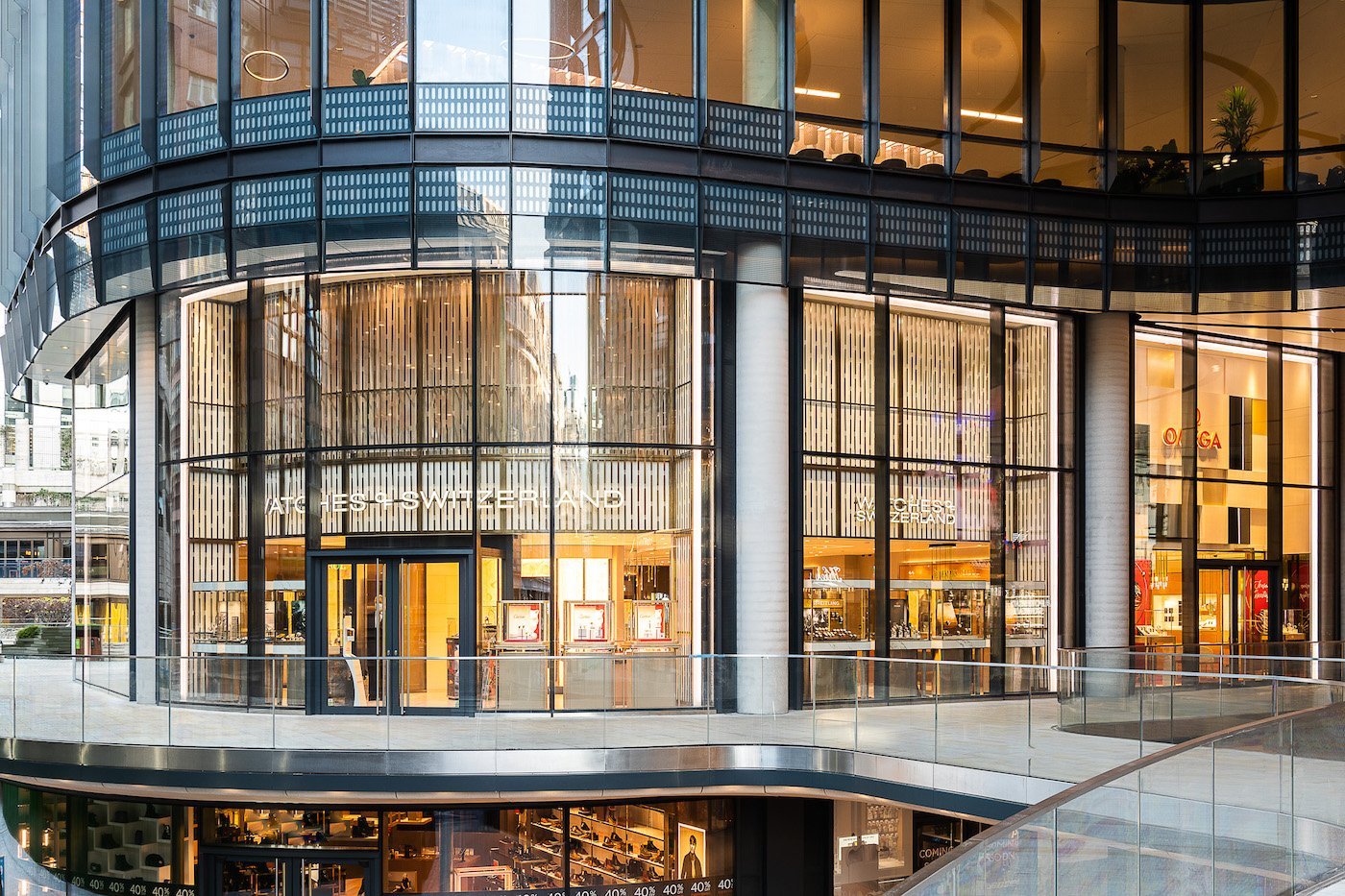

Super-Retail: the race for global dominance
fter the single-minded race to conquer China that dominated the horological agenda of the last decade, a new competition has taken its place. A growing number of national and regional retailers, both physical and digital, are seeking to expand beyond their home markets, through new openings and takeovers. By doing so, they are becoming “super-retailers” with multiple anchor points.
Recent examples include British retailer Watches of Switzerland’s breakthrough in the US market, the establishment of WatchBox in the Middle East in partnership with Ahmed Seddiqi & Sons, the takeover of Sincere by Cortina in Singapore or the expansion of the Chow Tai Fook network in mainland China. “The United States and Europe remain huge underexploited markets with a lot of promise,” says Brian Duffy, boss of the British group.
But this race is actually several races, being run in parallel:
• The race for market share as traditional retailers react to increasing pressure from secondary market players and auction houses – particularly for watches that are hard to find on the primary market.
• The race for inventory, as certain models from the major houses (Rolex, Patek Philippe, Audemars Piguet, Richard Mille) and independent craftsmen (F.P.Journe, Philippe Dufour, Voutilainen, MB&F, H. Moser & Cie, De Bethune, Akrivia) reach staggering prices.
• The race for local customers, as the interruption of shopping tourism restores the importance of a local customer base, particularly in the United States and Europe.
• The race for content and interaction with a new generation of dynamic collectors who appeared during the pandemic; this audience not only has a strong interest in the most popular models, they also have a big appetite for horological culture in the broader sense.
• The race for online visibility, as the distinction between second-hand and new watches increasingly gives way to the notion of “collectibles” on a global hunting ground.
• The race for partnerships with the biggest brands, with a view to opening mono-brand boutiques or managing their secondary market.
Rather than a “fight to the death” between brands and major retailers, the trend seems to be towards a deepening of partnerships between them, and the creation of intercontinental super-retailers.
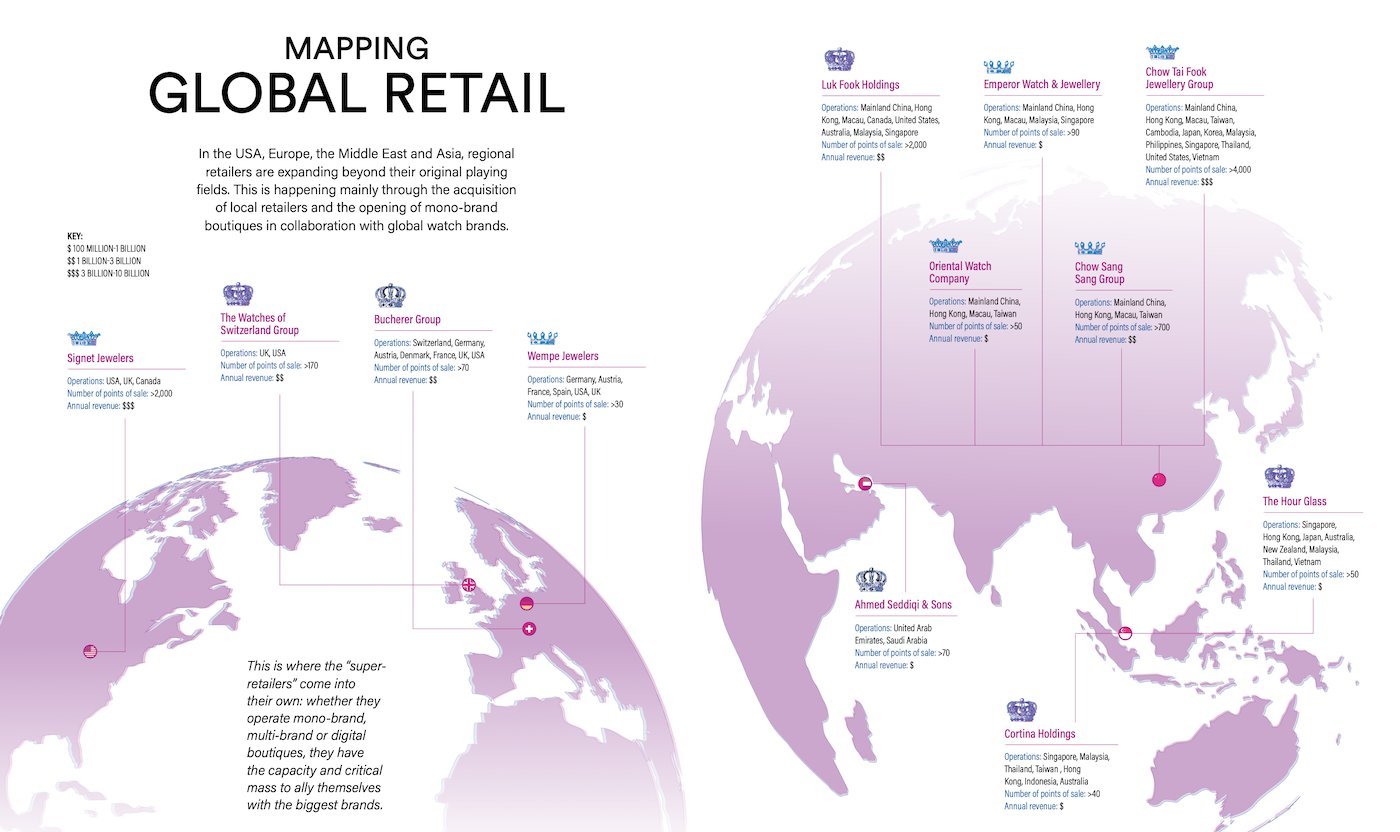
Cooperation after confrontation?
Pre-pandemic, it looked like watch brands and groups would double down on the idea of becoming their own retailers, at the expense of the traditional players. The difficulties in certain specific markets such as Hong Kong, followed by the outbreak of the pandemic, highlighted the challenges connected with going it alone (despite the fact that Richemont remains the world’s largest watch retailer).
Rather than a “fight to the death” between brands and major retailers, the trend seems to be towards a deepening of partnerships between them, and the creation of intercontinental super-retailers. This is reflected in increasing numbers of mono-brand franchise stores and numerous takeovers of smaller retailers by these new giants. This model of cooperation is also a legacy of the pandemic, which acted as a brutal “crash test” of the strengths and weaknesses of each player.
Gone are the days when watch stores could line the streets of a city like Hong Kong, offering the same products from the same brands. Everything today is about added value and exclusivity.
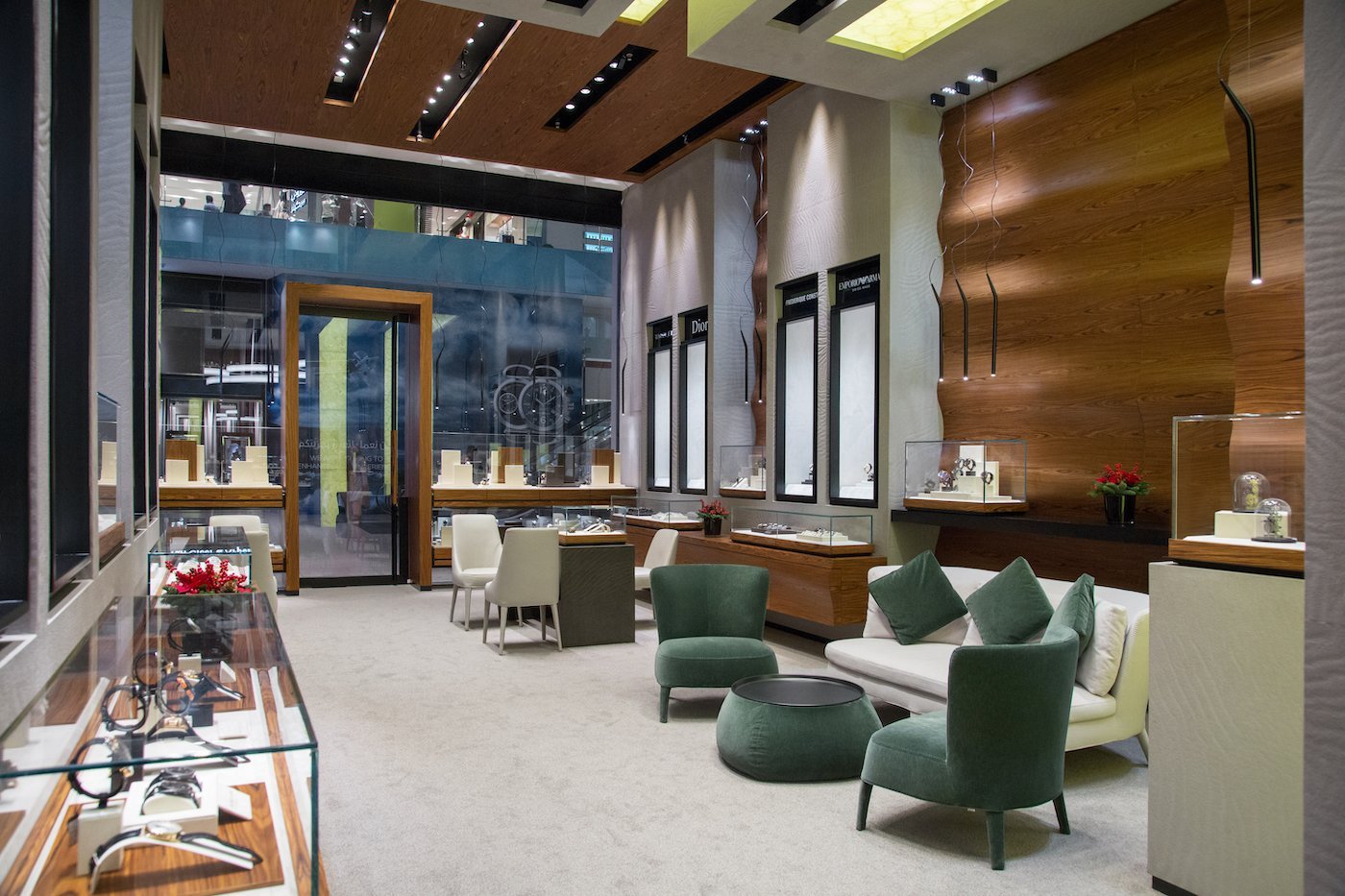
Stock market success
Consultant Thierry Huron of the Mercury Project notes that in 2021 the stock market performance of most of these super-retailers exceeded that of the watch groups and brands themselves (see chart below).
He believes successful retailers have found a way forward by capitalising on the success of their digital transformation, and by representing smaller independent watch brands alongside the market leaders. They also benefit from strong liquidity that allows them to invest heavily, especially online.
The consultant details: “This is one of the reasons why many retailers have strongly outperformed the value gain of the largest listed watch and jewellery brands, such as Swatch Group and Fossil Group, which were up by only 15.5% and 19.2% respectively. Even the Richemont Group, with its spectacular gain of 71%, was overtaken by Emperor Watch & Jewellery, Oriental Watch, Cortina, The Hour Glass and Watches of Switzerland. Although most of these retailers distribute Richemont brands, they outperformed the group.”
Signet Jewelers regained its 2015 record with a 216% rise in 2021, and Watches of Switzerland and The Hour Glass hit all-time highs. The share prices of most of the listed specialist watch and jewellery retailers recorded almost continuous gains throughout the year.
What has worked for one watch brand will not necessarily work for another – a common mistake in group strategies, where the push towards mono-brand boutiques might not be appropriate across the board.
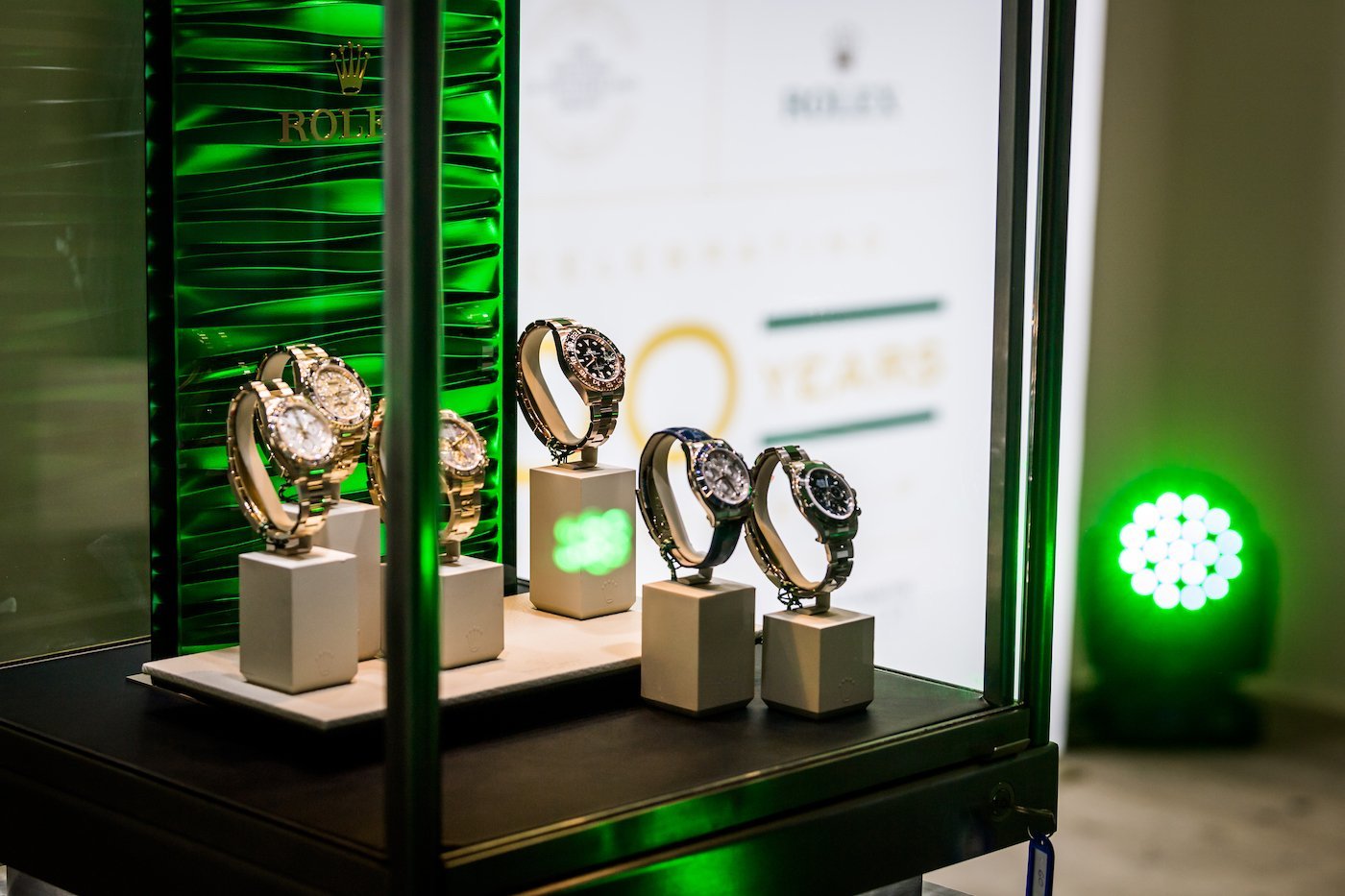
A wealthier local customer base
Regardless of location, in Europe, the US and Asia, retailers have been buoyed by a dramatic economic recovery, boosted by unprecedented fiscal and monetary stimuli that have fuelled a surge in demand for luxury watches and jewellery. “From the US to Japan and Europe, savings by affluent Millennial and Gen Z consumers, thanks to reduced spending on travel, entertainment and services during the lockdowns, have helped drive this demand,” notes Thierry Huron. “More recently, in China, this trend also seems to be amplified by Chinese investors who now prefer luxury watches to real estate.”
In a market that remains fragmented between a multitude of local retailers, the consultant predicts that consolidation will continue. He also forecasts massive online investment, as several traditional players have used the period of the pandemic to catch up with online sales.
“More than ever, size matters in negotiations between retailers and brands in a market that is being totally reconfigured.”
Balance of power
“The recent takeovers do not surprise me at all,” confides Oliver R. Müller, head of the LuxeConsult consultancy firm. “More than ever, size matters in negotiations between retailers and brands in a market that is being totally reconfigured. Today, in this balance of power, very few brands could afford not to collaborate with retailers such as Watches of Switzerland or Bucherer.”
The expert sees the future of watch distribution as an “intelligent network” calibrated by each brand between e-commerce, mono-brand boutiques and multi-brand sales outlets. For him, one thing is certain: the number of multi-brand outlets will continue to decline. “We are going to see a dramatic reduction in the number of points of sale, with the creation of champions who will swallow up smaller players.”
Gone are the days when watch stores could line the streets of a city like Hong Kong, offering the same products from the same brands. Everything today is about added value and exclusivity. And for independent retailers, there are no more certainties: a historical partnership can be dissolved in seconds. That’s where a certain critical mass becomes vital – to be able to talk to brands on an equal footing.
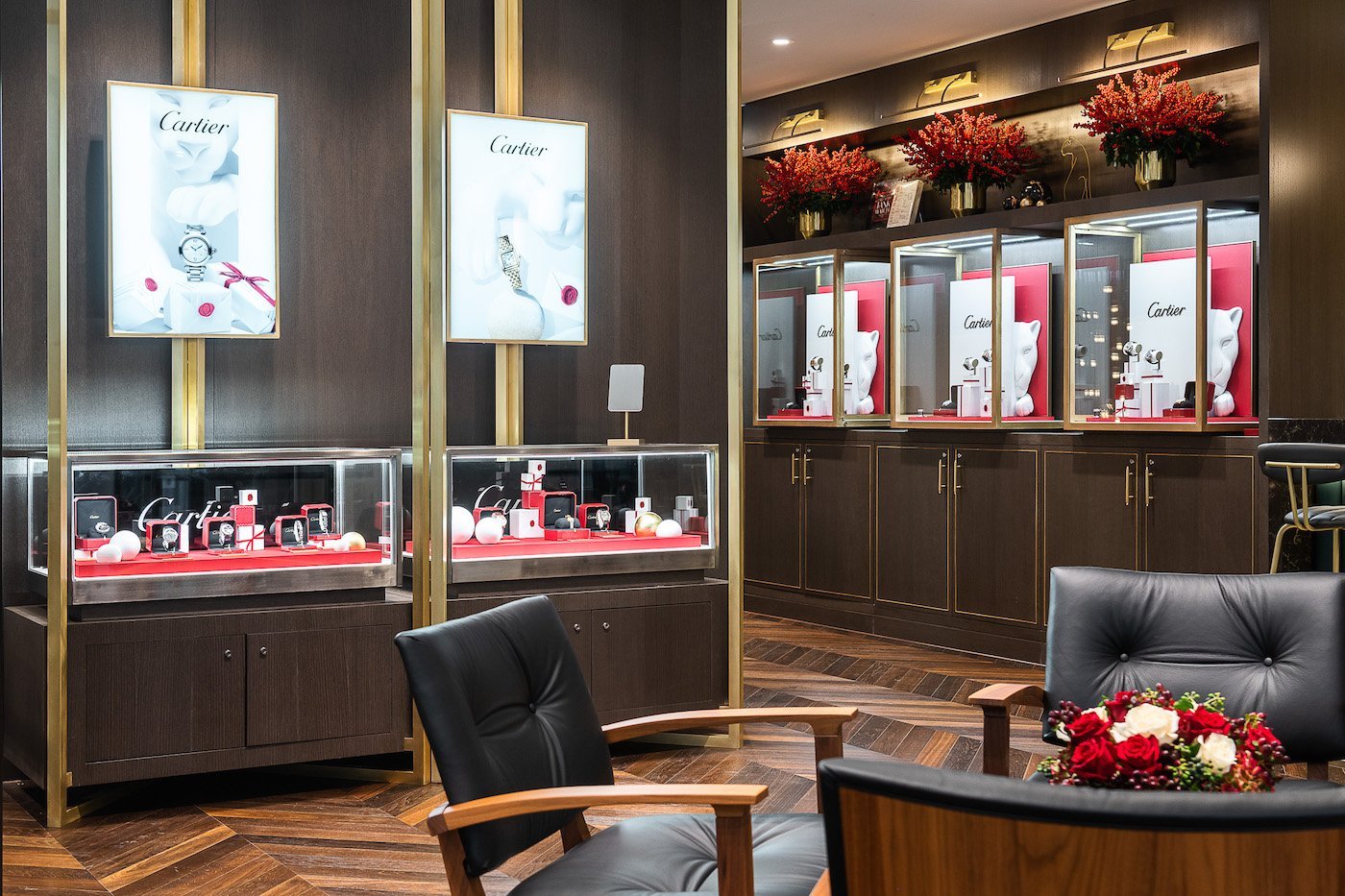
Finding the magic formula
Every brand is looking for the right mix of distribution. And what has worked for one watch brand will not necessarily work for another – a common mistake in group strategies, where the push towards mono-brand boutiques might not be appropriate across the board. There are multiple visions, as illustrated by the most popular brands in the market. Rolex and Patek Philippe still rely on a network of external distributors, while Richard Mille and Audemars Piguet have opted for vertical distribution.
This is where the “super-retailers” come into their own: whether they operate mono-brand, multi-brand or digital boutiques, they have the capacity and critical mass to ally themselves with the biggest brands, while local players can no longer compete.
For retailers, there are no more certainties: a historical partnership can be dissolved in seconds. That’s where a certain critical mass becomes vital.
“This does not mean that a local retailer with one or two outlets will necessarily disappear,” emphasises Oliver R. Müller. “The most prestigious of them, such as Beyer Chronometrie in Zurich, are there to prove it. But the reality of the market is brutal: if you are no longer able to demonstrate your added value and the growth you can bring to partners, the biggest ones will leave. And you will eventually close down... or be bought out.”

Watches of Switzerland, a “super retailer” in the making
ritish retail giant Watches of Switzerland Group, which has been vastly transformed since being taken over by new management in 2014, has unveiled an ambitious Long Range Plan for the five-year period up to 2026. Its goals are to strengthen the group’s luxury watch leadership in the UK, where it is already the dominant retail group; become US market leader after its American breakthrough over the last few years; and last but not least, enter the continental European market.
With a portfolio of over 160 stores across the UK and US, including some 50 mono-brand boutiques (with Rolex, TAG Heuer, Omega Breitling, Audemars Piguet, Tudor, Grand Seiko and FOPE), the group comprises several distinct entities: Watches of Switzerland (UK and US), Mappin & Webb (UK), Goldsmiths (UK) and Mayors (US), with a complementary jewellery offering. It was also very active in travel retail until the pandemic put the brakes on, notably through an extensive presence at Heathrow Airport.
“Through focused investment we have built a modern, digitally advanced multi-channel retailer and have achieved outstanding momentum in the US since our entry into the market in late 2017,” says group CEO Brian Duffy. “We plan to achieve growth through further geographical diversification, becoming the clear leader in the US market, and establishing a presence in the EU with the targeted roll-out of our proven model.”
-

- Brian Duffy, Watches of Switzerland Group CEO
“We plan to achieve growth through further geographical diversification, becoming the clear leader in the US market, and establishing a presence in the EU.”
The latest results for the first half of the 2022 financial year (ending on 31 October 2021) confirm the group’s resilience, along with that of other “super retailers” active across several markets globally. Revenue reached £586.2 million for the period, representing growth of 44.6% compared to 2021 and 40.8% over 2020. This result was led by a significant increase in sales volumes for “non-supply-constrained brands” (i.e. not Rolex, Patek Philippe or Audemars Piguet). The Watches of Switzerland Group now expects record revenue of £1.15 billion to £1.20 billion for the full year.
The group has further revealed that each individual brand showed positive average selling price growth, and that group e-commerce sales grew 28.7% last year. In the US, where sales were up 66.7% compared to 2020, it recently purchased five stores in Plano (Dallas), Vail, Aspen, Greenwich and Minneapolis. In the UK, revenue is up 31.8% compared to 2020, despite the loss of travel retail, which accounted for 33.6% of the group’s sales last year, standing at 1.7% currently.
The group, which has been listed on the London Stock Exchange since June 2019, continues to ramp up the rate of acquisitions, refurbishments and openings of both mono- and multi-brand boutiques. After completing the acquisition of Betteridge and Timeless Luxury in the USA, it plans to open new stores in New Jersey and Cincinnati.
We interviewed Group CEO Brian Duffy.
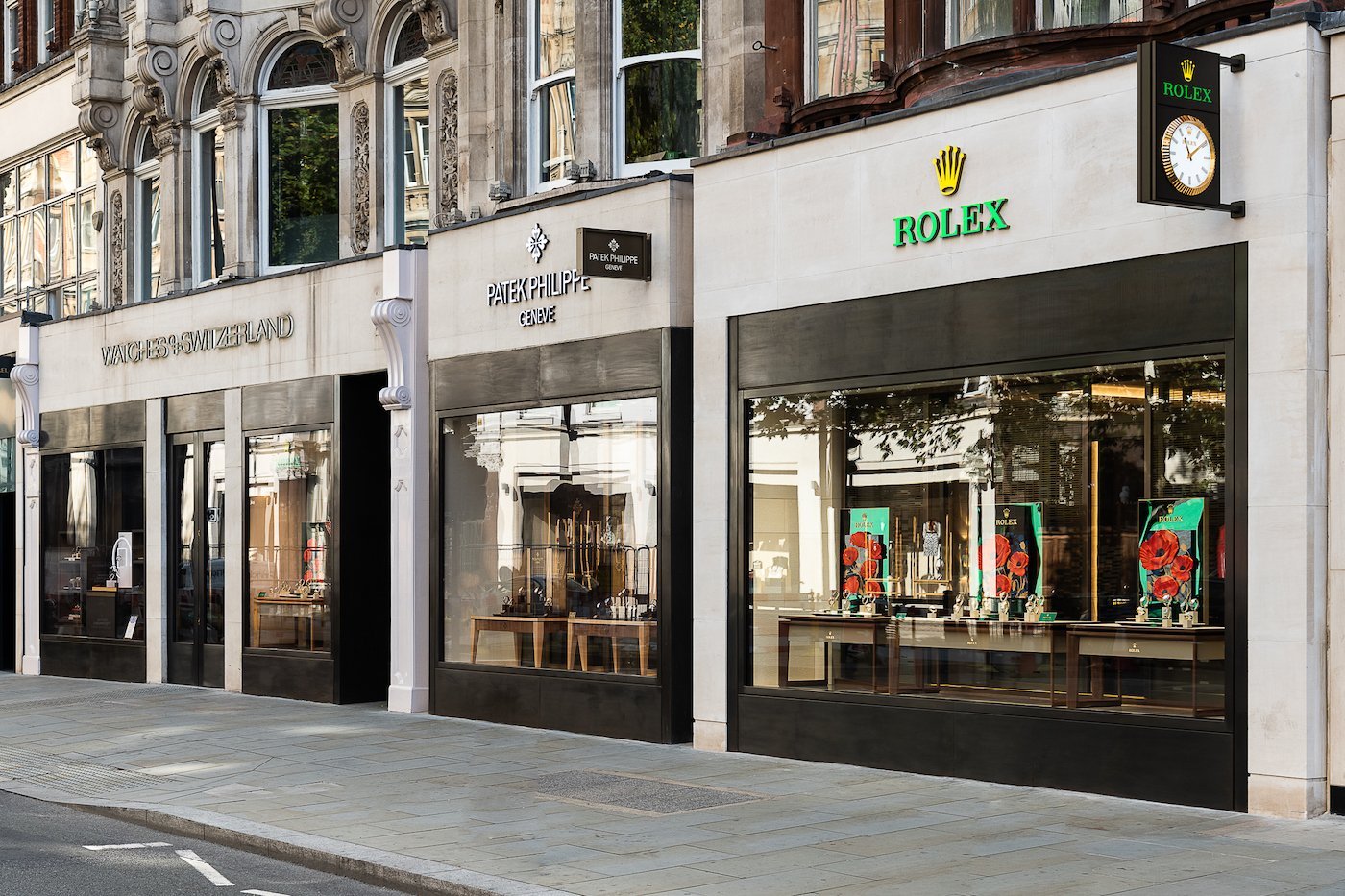
Europa Star: Could you comment on your latest results and, more broadly, tell us how you coped with a pandemic that is still not over, two years in?
Brian Duffy: With a group revenue of £586.2 million for the first half of our 2022 fiscal year, we are very pleased with our levels of growth and profitability. Our return on capital employed increased to 23.1%. We’ve been dealing with challenges over the last two years, but I feel very good about business going forward.
What’s been your recipe for resilience and growth?
A strong strategic transformation backed up with a successful investment in the US. Since 2014, we have based our strategy on upgrading stores, partnering with brands to invest in technology and marketing, and investing in people through development and training. We follow an investment-led approach and from 2014 to 2019 we registered double-digit growth in sales, with a CAGR +40% in profitability.
“Super-retailers” seem to be developing globally, backed by a dominant position in their home market, which in your case is the United Kingdom.
With yearly total retail sales of approximately £1.3 billion, the UK is the best luxury watch market in the world, as it has the highest per capita retail spending by domestic customers on luxury watches. Between 2012 and 2019, the market grew by a CAGR of 10%, mainly driven by average selling price increases. The UK’s spending ratio per capita is better than Europe and the US, and our footfall is growing in the country. We believe that this differential to other markets reflects retail investment, not customer behaviour. That creates an opportunity to successfully replicate our model in other geographies, and build on the success we have delivered in the US to date.
“The United Kingdom is the best luxury watch market in the world. It has the highest per capita retail spending by domestic customers on luxury watches.”
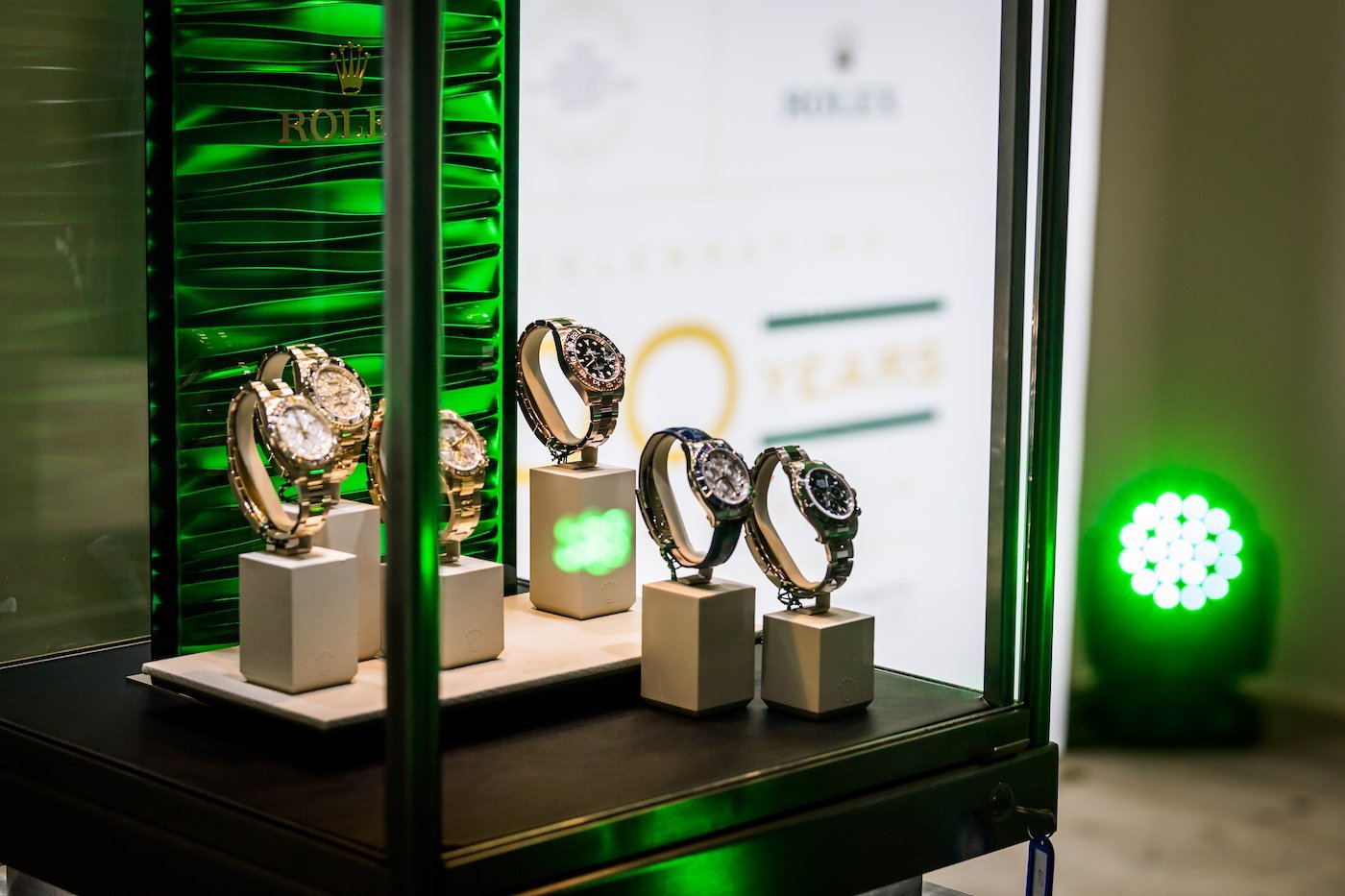
Why did you choose to invest in the US?
We were initially invited to invest in New York, in particular by Saks Fifth Avenue, as they were looking to develop their watch segment. Because of a lack of investment, the US market for luxury watches is underdeveloped, with retail sales of approximately $4.5 billion. If you bring it back to a per capita ratio, the US market represents only 40% of that of the UK. Between 2012 and 2019, the US market grew by a CAGR of only 2%, with most growth achieved since 2018. It is a very fragmented market with a lot of very small players. When we arrived, there was no real market leader like us in the UK. That led us to open our Hudson Yards boutique in New York, followed by another in SoHo. In parallel, we began negotiating the acquisition of Mayors, which operates 15 stores in Florida and Georgia. Then we were invited to Las Vegas to take over watch retail for Wynn. All in all, these developments gave us a good geographical distribution on both the East and West coasts.
How did you upgrade your presence there?
We started with a strategy of investing in opening new stores, as well as better arranging and in some cases repositioning some existing stores. For instance, we moved to better locations in Las Vegas, and we also relocated some Mayors boutiques. We had a positive mindset when we arrived in the US, but we’ve exceeded our expectations there. Everything seems to be working! In 2022, we’re opening new boutiques at the American Dream mall in New Jersey and in Cincinnati, and we’re also starting a programme of developing mono-brand stores and e-commerce. Looking ahead, we expect our US revenue to grow by a CAGR of 25% to 30% yearly, and we believe the US will outperform the global market, driven by continued investment in retail.
“If you bring it back to a spending ratio per capita, the US market represents only 40% of that of the UK.”

Are you also targeting continental Europe for investment?
Yes, as part of our Long Range plan we want the European market to represent 8% of our total sales by 2026, or in other words, about 130 million euros. Today, in terms of performance and development per capita, the EU is more developed than the US, but less than the UK. The EU luxury watch market has not grown at the same pace as the UK since 2000, and we believe the market is under-invested and under-potentialised. It is also more traditional, so we can appeal to a broader audience than what exists today, because we’re good at social media advertising and store design. The way we will invest in Europe is through a mix of acquisitions and opening mono-brand stores.
Which perform better: mono-brand or multi-brand stores?
We actually make less of a distinction than you would think; it’s about creating a nice space for everyone. Both are dynamic. The best example is the Battersea Power Station project here in London, which is a massive residential and commercial development that will host Apple’s offices. We are going to be there both with a great multi-brand store and with individual Tudor, Omega and TAG Heuer boutiques.
“The way we will invest in Europe is through a mix of acquisitions and opening mono-brand stores.”
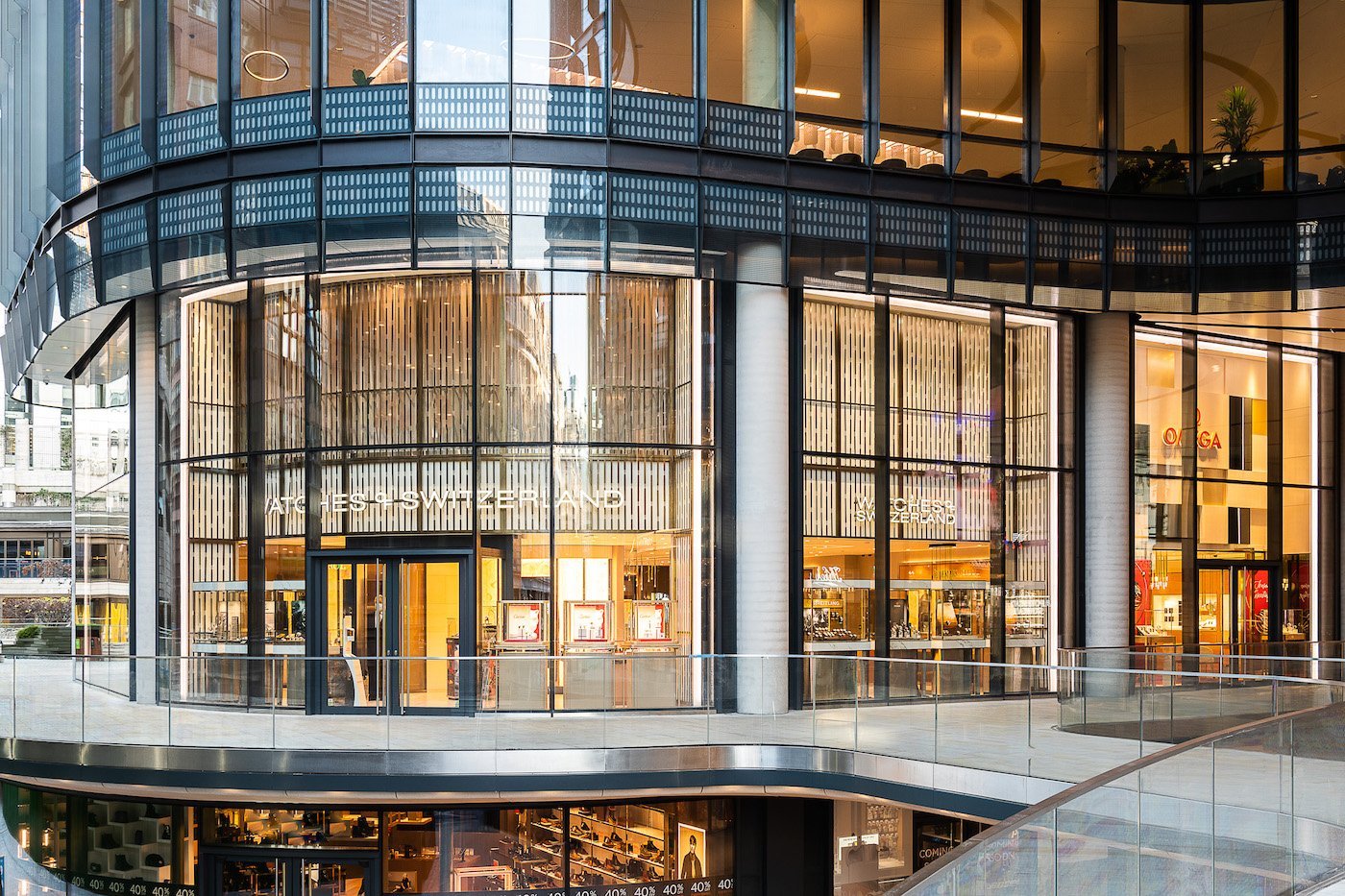
After seeing strong growth in mono-brand boutiques operated by the watch brands themselves, this strategy seems to have been undermined by the pressure of the pandemic. What’s your assessment?
Overall, my call would indeed be towards a decrease of brands doing their own boutiques all by themselves. Of course there are exceptions, such as Audemars and Richard Mille, who are moving 100% in this direction. But I don’t see all brands going there, and we will actually continue to work with them through joint ventures. For instance, brands such as Omega and TAG Heuer are expanding their mono-brand store strategy in partnership with us.
The pandemic has accentuated the dominance of a few key brands, both in visibility and in sales. How dependent are you on them?
Historically, Rolex has represented half of our business, and Audemars Piguet and Patek Philippe an additional 8%. But today, these brands are constrained in terms of supply. Their share within our group’s sales has actually reduced from 60.5% to 58.6% over the past year. The next group of brands – Cartier, Breitling, Omega and Tudor – are enjoying strong growth and their average selling prices are on the rise. These brands are becoming a bigger part of our portfolio.
“Historically, Rolex has represented half of our business, and Audemars Piguet and Patek Philippe an additional 8%. But today, these brands are constrained in terms of supply.”
Another segment enjoying strong growth is pre-owned. How do you operate there?
We are focusing on “real” pre-owned since we acquired Analog/Shift and rebranded their business. Then you’ve got a segment of grey market “pre-owned” that is a consequence of supply constraints. But we will keep investing in a vintage offering through Analog/Shift.
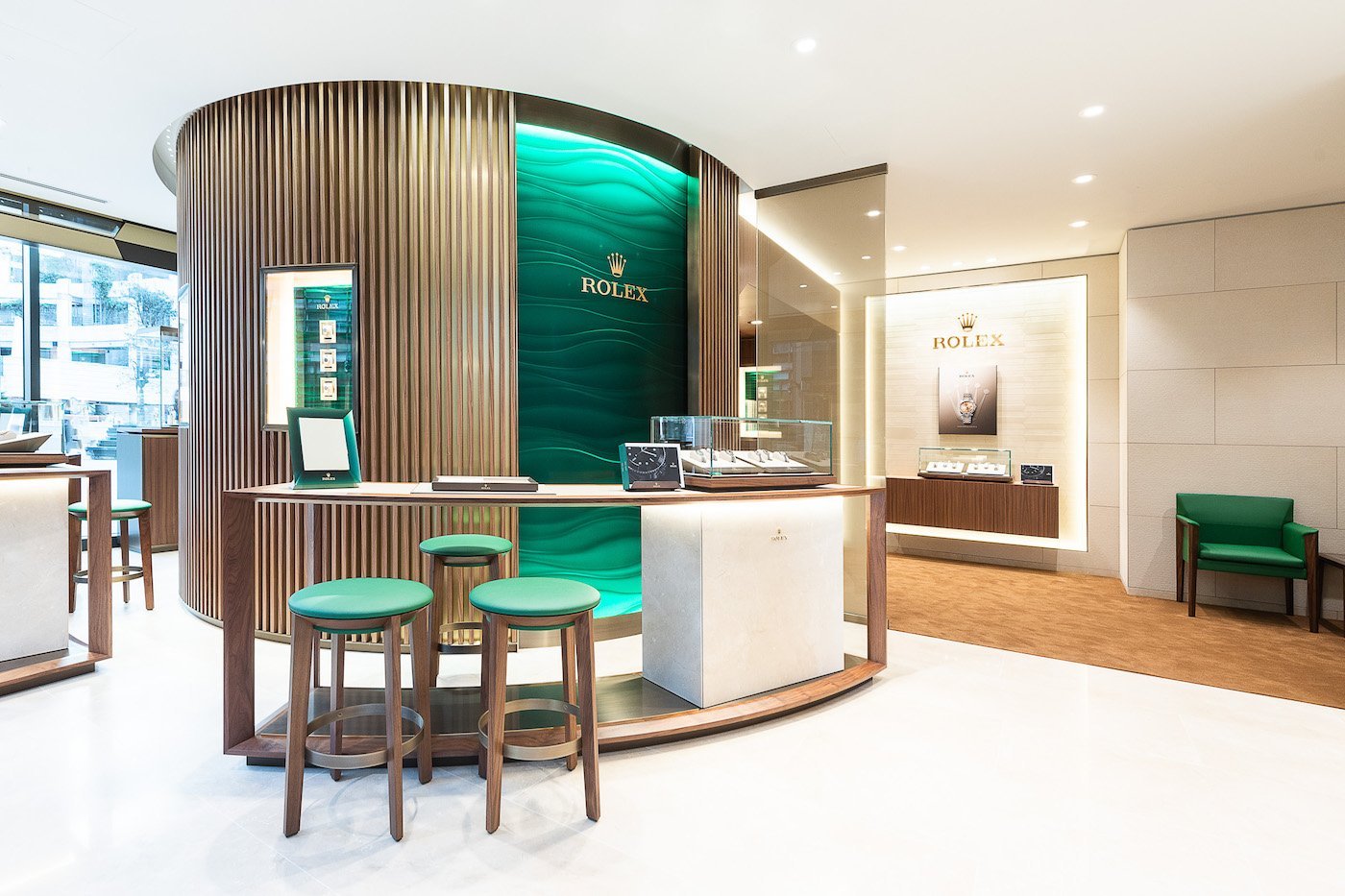
Is the share of independent artisanal brands in your portfolio increasing?
Yes, and we are working hard to promote them. In this respect, America has helped us gain greater exposure to the independents. H. Moser & Cie is a great example, and we also love MB&F. Brands that we represent such as Bovet, Armin Strom and Speake-Marin are also a great source of innovation. In a way, you could also consider Grand Seiko, Ulysse Nardin and Girard-Perregaux as smaller brands with growing energy.
Is the future of retail going to be dominated by brands, groups, local retailers, e-commerce specialists or international retailers?
The trend is clear, and the market is clear: to succeed, you have to be multichannel and digital, and that needs a certain scale. There is a natural preference for actors like us, as we see everything as integrated. Brands have an interest in partnering with actors that can achieve a certain scale. Indeed, I strongly believe that the global category of luxury watches remains underdeveloped. Some key high-quality independent local retailers will be here forever, but there is a trend towards fewer, better, more integrated international retailers.
“Some key high-quality independent local retailers will be here forever, but there is a trend towards fewer, better, more integrated international retailers.”

Watchbox, moving from “pre-owned” to “collectible”
sing technology, we aim to create the best customer experience in the industry,” states WatchBox’s co-founder and CEO Justin Reis. The Philadelphia-based e-commerce platform recently secured new funding to feed its global ambitions. These include scaling its digital platform, expand- ing into new markets, and enhancing what is touted as “the world’s most valuable and extensive inventory selection”, with more than $150 million worth of watches.
Last November, WatchBox announced it had raised $165 million of equity capital from lead investors The Radcliff Companies and The Spruce House Partnership, as well as CMIA Capital Partners and other existing investors, including a roster of household names such as basketball legends Giannis Antetokounmpo, Devin Booker and Michael Jordan. “Our investors and partners hail from a wide range of industries, from consumer to technology, finance and professional sports, yet we are all bound by our love of watches,” says Reis.
-

- WatchBox co-founder and CEO Justin Reis
This news came at the end of a successful year for WatchBox, which reached over $300 million in net revenue for 2021 and crossed the one billion threshold for cumulative revenue since its creation five years ago. Digital retail seems to be booming; according to McKinsey & Co., the primary and secondary watch markets are expected to grow from $66 billion to $97 billion by 2025.
By the end of 2022, WatchBox plans to open offices across the United States and internationally, beginning with locations in New York, Los Angeles, Miami, Zurich, and Riyadh. The new WatchBox destinations will join the existing company footprint which includes properties in Dubai, Hong Kong, Neuchâtel, Singapore, and its US headquarters in Philadelphia.
Last, but certainly not least, the American company acquired independent Swiss watchmaker De Bethune last year, signaling a move from the secondary to the primary market. We met Justin Reis to discuss these developments.
By the end of 2022, WatchBox plans to open offices across the United States and internationally, beginning with locations in New York, Los Angeles, Miami, Zurich, and Riyadh.

Europa Star: You have just raised $165 million in funding for the development of WatchBox. What are your strategic priorities for 2022?
Justin Reis: Our strategy is a continuation of last year: open new offices, build an unparalleled inventory, hire new talent and continue to invest in cutting-edge technology. When the pandemic hit, we were very cautious. But we’re actually coming out of it stronger in capital and liquidity, because ultimately our business was accelerated during the pandemic.
How is your strategy playing out?
In the US, we’re opening new offices to strengthen our local footprint and will hire at least 30 new client advisors. Outside the US market, we’re opening a presence in Saudi Arabia in partnership with Ahmed Seddiqi & Sons. And we are continuing to invest in Switzerland, to strengthen our presence in the “horological Silicon Valley”. In addition to our presence in Neuchâtel, we are opening new offices in Zurich and Geneva.
-

- The WatchBox lounge in Hong Kong
What about your online presence?
Content production is a central pillar of our strategy, and we’ll be distributing our content more widely, notably through our mobile app and our TV App which you can download on any Smart TV to access thousands of our videos. Through our content, we want to bring watchmakers closer to our customers. But above all, we’re continuing to invest in the best possible inventory. Our ambition is to move from the idea of “pre-owned” to “collectible”. Today, people are used to buying pre-owned. The determining factor is not so much the year of production as the quality of the products offered.
How do you differ from your rivals?
The larger platforms are more suited to mass selling of more entry-level products. Our average price is well over $20,000, and we make a significant investment in our personal relationships with our customers.
“Today, there’s no one dominant player in our field. That’s why we’re expanding our international activity. In the next three years, we want to have at least 40 offices around the world.”
Your investors include household names like Michael Jordan. Will you use their celebrity to convert new customers to collecting watches, or indeed, to buying watches at all?
We have been very lucky, because our relationship and friendship with these investors is organic: before they invested, they were WatchBox customers. When we offered them the opportunity to invest, there were no preconditions and they invested alongside our other institutional investors. Of course, we know that their names resonate with a wider audience. But we are not going to formalise the relationship. You won’t see us going down the paid ambassador route.
What has been your most dynamic market worldwide in the last year?
We’ve seen consistent activity. In fact, we’ve seen almost equal growth across all the major markets. This shows that there is much more uniformity between the different markets than in the past. The highest average selling price is still in Asia, at around 50,000 dollars. But two-thirds of our business is in the US, which accounts for the vast majority of our volume. And there’s still a lot of territory to cover within the US itself.
-

- The average price at WatchBox is over $20,000. Rare models from independent brands are particularly sought-after today.
What are your longer-term ambitions?
We remain very focused on our goal of bringing more customers into collectible watches. Today, there’s no one player dominating the global watch market. That’s why we’re expanding our international activity. For example, with the exception of Switzerland, we don’t yet have a presence in Europe. In the next three years, we want to have at least 40 offices around the world. But none of them will be traditional ground-floor boutiques: they will be private lounges for collectors. But alongside this expansion of our physical network, we want to invest in media and content.
You have partnered with Ahmed Seddiqi & Sons in the Middle East. Do you plan to develop similar partnerships with other retailers around the world?
Not in the first instance. It was a unique opportunity, because it’s the largest watch retailer in the United Arab Emirates and has an excellent reputation with global collectors and brands such as Rolex and Patek Philippe. They’re not just a traditional retailer; they also have a high cultural impact, through the organisation of Dubai Watch Week, for instance. But it’s not a model we’re looking to extend to other regions. We’re already present in Asia, and we want to develop our own brand.
-

- A space dedicated to WatchBox at Ahmed Seddiqi & Sons in Dubai
WatchBox is a spin-off of a historic American watch retailer, Govberg Jewelers in Philadelphia. How has this helped you, given that other platforms in your segment are still trying to find their feet with brands and collectors?
WatchBox was always designed to be completely separate from the primary market. But it gave us a very good head start in terms of how to build a business in the watch world. It was this horological DNA, with brand equity and customer experience, that differentiated us from our competitors. Many of them came in with a purely technological perspective.
How is your relationship with watch brands today?
This was one of the biggest question marks when we started. But our actions speak for us. We’re not looking for short-term returns through speculation, like some of our competitors. We are focused on educating our customers about collectible watches. We work with the brands to provide after-sales service and this relationship is supported by having continued open communication with the biggest brands. Our relationship with them has never been better. More recently, we have intensified our relationship with independent watchmakers. Through our collaborations, we provide them with business resources and allow them to focus on what they do best: creation.
“More recently, we have intensified our relationship with independent watchmakers. Through our collaborations, we provide them with business resources and allow them to focus on what they do best: creation.”
-

- The Swiss office of WatchBox in Neuchâtel
Do you see yourself more as a technology company or as a watch company?
We have tried not to lock ourselves into one category or another. We have invested a lot in technology and in people, because we are first and foremost a customer service-oriented company.
Are you going to add other items to your portfolio, besides watches?
Not in the foreseeable future, but nothing is impossible. We have to stay alert and focused. It would be risky to move away from our core business too soon. I have seen companies fail because they diversified too quickly.
-

- WatchBox during the Dubai Watch Week
Would you be interested in a direct alliance with a brand or group? We have seen Watchfinder join Richemont, Analog/Shift join Watches of Switzerland, Crown and Caliber join Hodinkee...
There’s an ongoing consolidation in our segment. But that’s not our ambition. There’s still so much we can do on our own! But we will certainly work more with groups in the future, because we add value by talking to the biggest collectors. In general, I see a greater openness; the culture is changing. There is less prejudice in the secondary market. Price transparency has also played a big role.
“In general, I see a greater openness; the culture is changing. There is less prejudice in the secondary market. Price transparency has also played a big role.”
Do you intend to eventually go public, as Chronext recently did?
At this stage we prefer to remain a private company as we see a lot of runway to continue to grow our platform globally and would not want the distraction of being public right now. In the end, going public is just another way to raise capital.
The supply of key models is becoming increasingly limited. Coupled with the recent price increases at Rolex and Patek Philippe, this could lead to even higher prices for the most popular watches.
New watch prices are rising because of inflation, not just supply and demand. Brands have not been able to keep up with customer demand, it’s not an elastic market and you have to invest in maintaining the value of the brand. So you will see prices rise and demand increase even more, in the years to come.
There has been an influx of an incredible new audience of customers during the pandemic, attracted not just by the increase in value of certain models, but more generally by greater watch knowledge, and a growing interest in collecting watches. This benefits our industry massively. And the surplus of customers who can’t get the watches they want are also turning to other brands, especially the independents. From Rolex and Patek Philippe, we have seen a move into independents such as H. Moser & Cie, MB&F and De Bethune.
-

- WatchBox acquired independent Swiss watchmaker De Bethune last year.
In 2021, you acquired the De Bethune brand. How did this transaction come about?
We had been an admirer of the brand since the early days of WatchBox. Often, independents are poorly capitalised. We built a good relationship over the years, with no particular end in mind. So when the opportunity to invest arose, we naturally stepped in to help them grow. Our role is purely supportive, we are not actively involved in the operations of the brand. In that sense, they remain independent. As with WatchBox, we know that we will be judged on our actions. The De Bethune brand is much better capitalised now and will be able to grow, but still with limited production. We will also continue to develop their pre-owned offering and promote direct sales by developing a closer relationship with the end customer.

“Brick-and-mortar remains our most dynamic activity”
uropa Star: How have you expanded outside your original market of Hong Kong?
Anthony Tsang: Over the years, Oriental Watch Company has developed a network of retail stores in the whole of the Greater China Region. We have become one of the largest watch retailers in the region, in large part thanks to our reputation, credibility and scale. Now we intend to deepen our presence all over the zone we cover, including Hong Kong, Macau, the PRC and Taiwan. We aim to ensure high operating efficiency by exercising stringent control, especially on rental cost, store performance, marketing, distribution channels and inventory management.
What is the most dynamic segment of your business?
It very much depends on the geographical area. Overall, brick-and-mortar remains our most dynamic activity. In the PRC in particular, and in the second half of 2021, domestic consumption of jewellery, watches and other valuables increased, which was good for our bottom line. We also introduced online sales in Hong Kong and the PRC in late 2021.
In terms of products, luxury sport watch collections as well as limited editions have been the most sought-after items over the last year. The pandemic outbreak disrupted the whole supply chain. Today, most of our customers are local users and collectors from Hong Kong and the PRC.
“The pandemic outbreak disrupted the whole supply chain. Today, most of our customers are local users and collectors from Hong Kong and the PRC.”
How has your relationship with watch brands evolved during the pandemic?
I would say that we work more closely with them, providing regular updates on our collaboration, especially in terms of social media. Most watch brands turned to digital platforms to reach out to customers during the pandemic, which meant that we, as retailers, could coordinate our communication more efficiently with them.
In addition, our new e-commerce platform provides a way for us to optimise the entire online-offline purchasing experience. Integrated online and offline stores can provide metrics to measure overall retail performance, by analysing factors such as audience acquisition and consumer behaviour, among others.

“Continuing to set the standard in our region”
uropa Star: What are your main strategic objectives for 2022?
Mohammed Abdulmagied Seddiqi: Our objectives will continue to be to sustain relationships with our existing clients, while catering to the rising demand for watches in the region. There has been a rise in demand across all brands in the Ahmed Seddiqi & Sons portfolio. This explains why the United Arab Emirates was ranked as the eighth largest market in the world for Swiss watches last year. We see this continuing for the foreseeable future. It is important for us to continue to set the standard in our region, through new immersive shopping experiences, new limited edi- tions or new collaborations with brands, while establishing the UAE as hub for luxury and horology.
With the current supply shortage in the industry, collectors and novices are diversifying their interests and increasingly looking to a lot of independent brands. There has also been a rise in demand for micro brands which sparked the creation of Vyntage, an initiative under the Ahmed Seddiqi & Sons umbrella. Our vision was to collaborate with micro brands and create unique collectible pieces that appeal to collectors globally.
“There has been a rise in demand across all brands. This explains why the UAE was ranked as the eighth largest market in the world for Swiss watches last year.”
How did the pandemic impact your business over the last two years?
The pandemic was tough for a lot of businesses but we witnessed some positive growth during this time. Given the travel restrictions that were previously in place, we were approached by new and existing clients, who were very keen to purchase watches due to a larger disposable income. Clients were learning more about watches and truly developing their passion for horology during this period. We were also approached by a wave of younger generation collectors, who were keen to start their collecting journey. They are well aware of what the market has to offer, and truly have a passion for educating themselves as they look to navigate the watch industry.
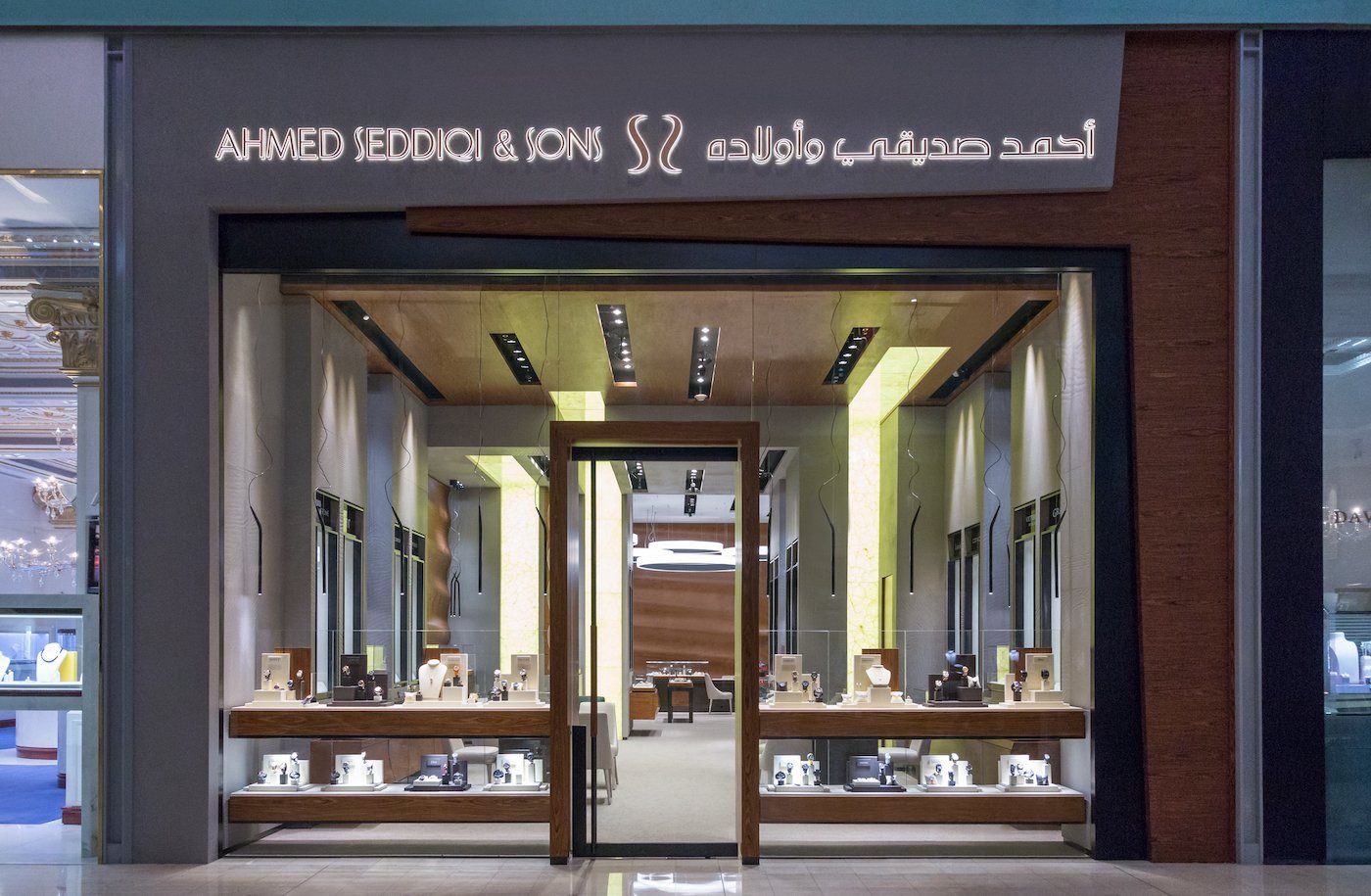
What is the most dynamic segment of your business: multi-brand brick-and-mortar stores, mono-brand brick-and-mortar stores, online sales, something else?
At Ahmed Seddiqi & Sons, we focus on the brick-and-mortar experience primarily and we believe this plays a key role in the customer experience. We also launched an e-boutique during the pandemic which has been a vital platform to showcase our offering. We are currently working on enhancing the in-store experience across our network of multi-brand boutiques as a priority.
We currently have over 70 boutiques in the UAE, and this will continue to be an avenue we keep an eye on as we look to pioneer the regional retail landscape. We have expanded into the Kingdom of Saudi Arabia; however, this is still a relatively new venture. The expansion has been successful thus far, and we hope to continue our growth there while respecting other retailers present in the country.

Beyer Chronometrie: deep roots and NFTs
urich-based retailer Beyer Chronometrie offers probably the best counterpoint to the ever-increasing concentration in the watch retail trade. We are seeing the emergence of specialised chains with a reach that encompasses several countries and even continents, as we show in our latest special report. After eight generations and an uninterrupted history dating back to 1760, Beyer Chronometrie has never ventured as far as the next canton, never mind neighbouring countries, despite receiving numerous requests to do so, and several proposals for international franchises over the decades.
But this has not prevented it from remaining a prestigious address, if not the most prestigious, on the watchmaking circuit. The name is surrounded by an almost mythical aura, just as much as those of its two longstanding partners, Rolex and Patek Philippe which it represents in Zurich. Pre-Covid, the address attracted a clientele of connoisseurs from all over the world. Perhaps this stubborn refusal to expand has even helped, rather than harmed, its legendary status.
Perhaps this stubborn refusal to expand has even helped, rather than harmed, its legendary status.
-

- Some of the many virtual timepieces imagined by the artists and designers commissioned by historical Swiss retailer Beyer Chronometrie for its foray into the world of NFTs.
From CPO to NFTs
“The Beyer family has always wanted to keep control of its environment, which is not possible through multiple subsidiaries,” notes head of marketing Philippe Meyer, who works alongside René Beyer, eighth-generation representative of the founding family. Nevertheless, the boutique has constantly adapted to the changing times. Here’s one example: “Certified pre-owned (CPO) is a fashionable concept, but Beyer Chronometrie has been buying and selling second-hand watches since 1965! We were also among the first traditional retailers to use Instagram.”
Further proof of this innovative and yet grounded mindset – which may come as a surprise to many – is that the retailer is now getting into NFTs! “We’re not going into it with a strict business plan or specific expectations, but simply with a desire to generate creativity,” explains Philippe Meyer. “When our digital agency approached us at the end of 2021 to present their new unit dedicated to the metaverse, we saw it as an opportunity to give it a try, and to create Beyer Chronometrie’s first NFT watch collection.”
“When our digital agency presented their new unit dedicated to the metaverse, we saw it as an opportunity to create Beyer Chronometrie’s first NFT watch collection.”
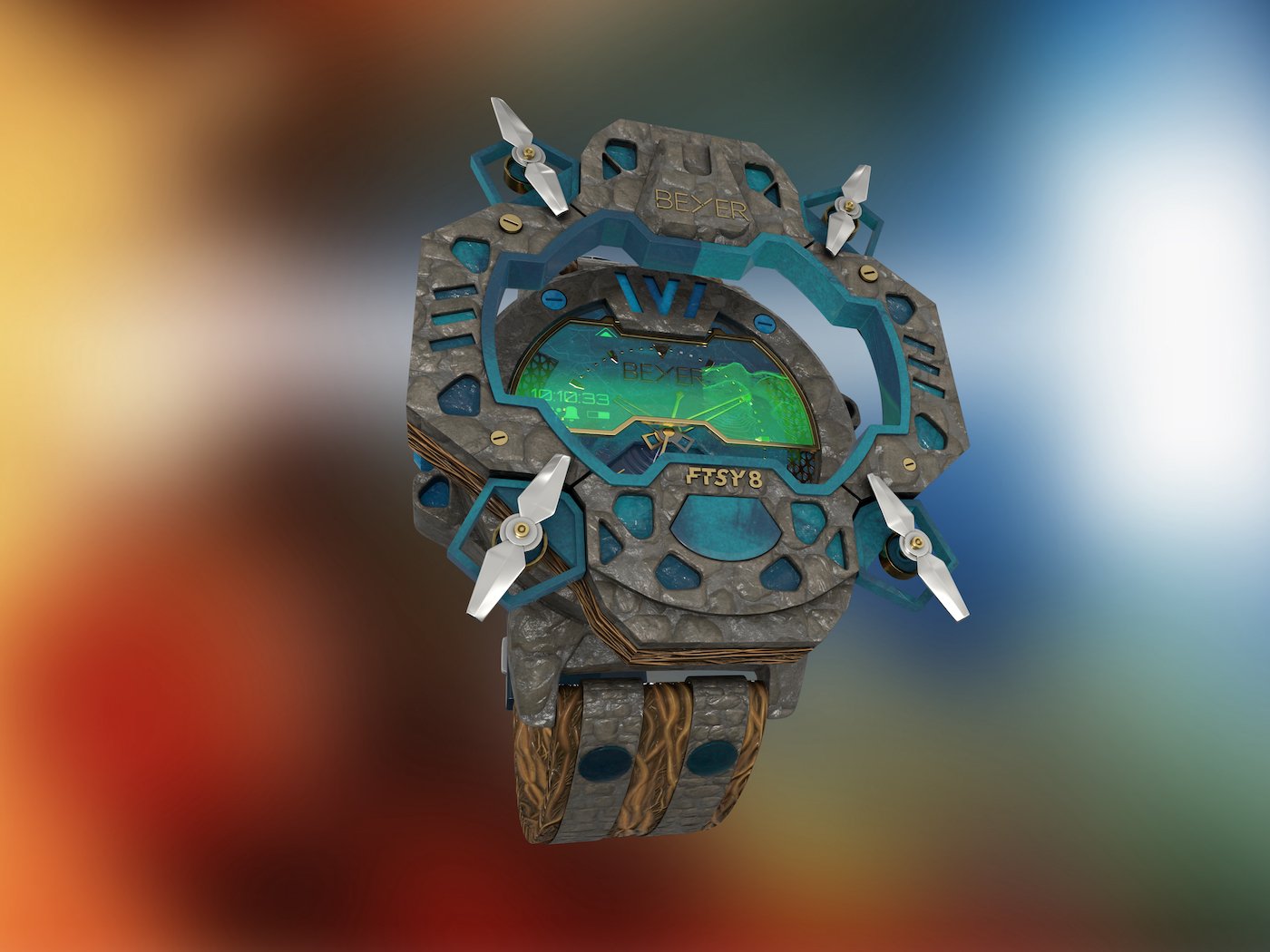
Breaking free from reality
René Beyer was happy to give his approval to this leap into the unknown. “Creatively, you can do anything with NFTs, because the barriers of the real and the physical no longer exist. In itself, this project is perhaps even more artistic than horological.”
Beyer Chronometrie asked four designers from different fields to create a series of new virtual watches: Simon Husslein, designer and professor of interior architecture at the HEAD in Geneva; Niklaus Hodel (aka “The Shoe Guy”), a luxury footwear specialist; Ricardo Diaz, a 3D artist who is also in charge of transcribing the virtual designs in this venture; and Florian Beck, a digital specialist and the man behind the project, which is named FTSY8 (read “Fantasy”) x Beyer Chronometrie.
Beyer Chronometrie asked four designers from different fields to create a series of new virtual watches.
The results are light years away from what one would expect from an eight-generation watch retailer. Among the NFT models we find “Allevo” with its movement that floats above the dial, “Sky Spotter” featuring a drone that lands on the case and “The Hanoi”, a recreation of the iconic watch from the film Pulp Fiction.
“For this project, we are working at the intersection of watchmaking, technology, gaming, streetwear and fashion,” says Philippe Meyer. “There will be a very wide choice of NFT models with multiple variations that can be purchased on a dedicated platform.” Rather than expanding its physical footprint, after eight generations in business, the retailer has finally found a new and limitless virtual territory to explore.


